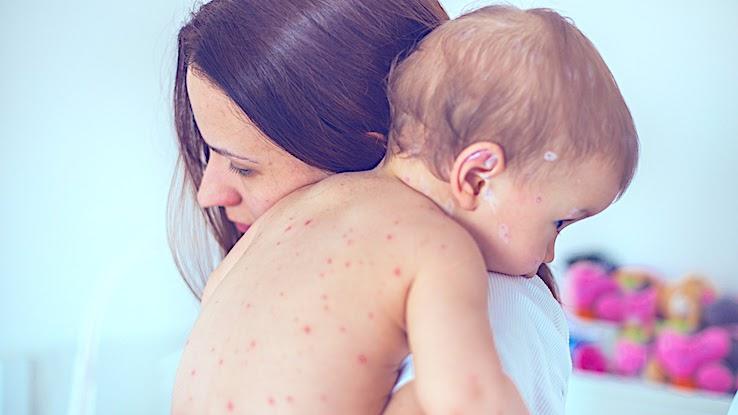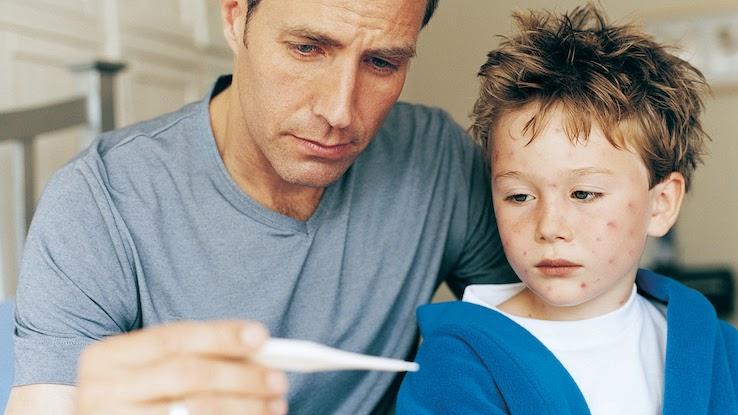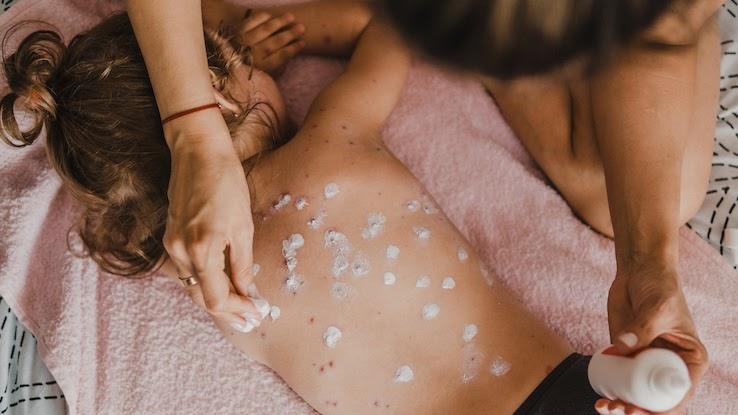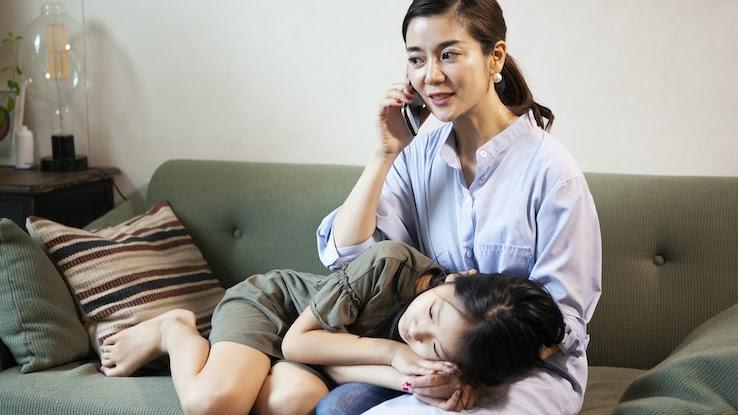
Coming down with chickenpox can be an unpleasant experience. For children, it’s a week of uncomfortable itching and small red boils that appear all over their bodies. For teens and adults, it may be a more severe infection that can require antiviral drugs to reduce the risk of complications. If you or your child comes down with this virus, it helps to know that you can take steps to relieve some of the discomfort it causes. Try these at-home treatments to ease the itching and pain.
What Is Chickenpox?
Chickenpox is a highly contagious illness that typically occurs during childhood, usually between the ages of 4 and 10. People who get this illness often find themselves covered with hundreds of red, itchy blisters that are filled with fluid. The blisters typically burst and become crusted as the illness progresses. Here are some things you should know about chickenpox:

- It’s caused by the varicella zoster virus (VZV).
- Chickenpox typically causes a red, itchy rash, which then develops into fluid-filled blisters.
- The rash typically starts on the chest, back and face and usually spreads to affect the whole body.
- It usually takes around one week for all of the blisters to crust over.
The illness is highly contagious, with people who are infected remaining able to transmit the virus to others starting two days prior to any rash appearing. The illness remains contagious until all of the lesions have crusted over.
Chickenpox is transmitted from person to person by close contact. This might involve direct contact with an infected individual or come from touching contaminated surfaces.
In children, symptoms often appear a few days before the characteristic rash appears. These initial symptoms may include:
- Headache
- Fever
- Stomach ache
- Loss of appetite
- Fatigue/tiredness
There is a vaccine available to prevent people from contracting chickenpox. The vaccine normally involves two doses; the first dose is recommended for all children at around 12 to 15 months of age.
You should remain at home for the duration of the illness until all of the blisters have crusted over to prevent transmission to others. Children should stay home from school during this period.
Chickenpox Home Treatments to Use — and Things to Avoid
Chickenpox usually resolves on its own after a week or two. In healthy children, self-care is recommended to aid with the management of symptoms, and there’s usually no need to see a doctor. Use these at-home treatments to alleviate chickenpox discomfort.

- Over-the-counter medications: Acetaminophen is useful for reducing fever and treating any pain the rash causes. Be sure to check the dosage and administer the medication correctly according to age. Do not give aspirin or ibuprofen to children.
- Avoidance of scratching: The rash can be itchy, and it can be tempting to scratch the skin. Scratching can lead to scarring and infection, and it can slow down the healing process. To prevent injury to the skin, keep nails clipped short, and consider wearing soft gloves to prevent subconscious scratching.
- Personal hygiene: Personal hygiene is very important for a person with chickenpox. You should aim to keep your skin clean and dry. Take a bath or shower daily to help prevent the blisters from becoming infected. If the blisters cause scalp irritation, it’s important to wash regularly with a mild shampoo.
- Lotions and creams: Itch-relieving lotions and skin creams can help you get through the chickenpox. You can apply calamine lotion to relieve itching. A physician can also prescribe an antihistamine cream to help with the itching if it’s particularly irritating.
- Staying cool: Heat and sweat can exacerbate the itchiness. Try keeping the infected person in a cool area, and use cool, wet compresses to relieve itchy sensations.
- Herbal remedies: There are numerous herbal remedies that might be useful for someone who has chickenpox. You can add oatmeal to a bath to help soothe itchy skin, and herbal remedies such as St. John’s wort or burdock can provide some relief when added to a bath.
- Hydration: It’s important to stay well hydrated any time you’re ill, particularly if you have a fever. Keep a cool drink on hand, and encourage children to increase their fluid intake.
- Rest: The most important home treatment for chickenpox is getting plenty of rest at home. Most children are usually more than capable of fighting off the illness by itself.
There are also some specific things you or your child should avoid while the case of chickenpox is active.
- Don’t eat oily, spicy or acidic food — anything that might irritate skin or make eating difficult if the chickenpox blisters are present around your mouth. You’ll also want to avoid any spicy foods that can make your body hot or cause you to sweat.
- Don’t take aspirin, which can cause complications in certain people, particularly children.
- If you use calamine lotion to relieve itchy areas, avoid using it around your face, especially near your eyes.
When Is It Time to Call Your Doctor?
Certain groups of people are at higher risk of developing complications from chickenpox. When you or your child fall into one of these groups, you should speak to a healthcare provider if you suspect either of you has come down with chickenpox:

- You are pregnant. Pregnant women are at higher risk for severe complications if they become infected with chickenpox. Should this occur, seek medical attention right away.
- You have a pre-existing skin condition. While most people develop several hundred red spots around their bodies when they have chickenpox, people with skin conditions like eczema can get up to 1,000 or more pox.
- You are an adult and have already had chickenpox when you were younger. It’s possible for adults who have already experienced chickenpox to become infected with a similar illness known as shingles. Like chickenpox, shingles is a painful skin rash that blisters, usually in well-defined lines on one side of your body.
- You have any condition that decreases immune system functioning.
- You have chickenpox and have a fever that lasts more than four days.
- You have chickenpox and the blisters don’t improve in five days.
Resource Links:
https://medlineplus.gov/chickenpox.html
https://www.cdc.gov/chickenpox/about/index.html
https://www.nhs.uk/conditions/chickenpox/ https://www.cdc.gov/vaccines/hcp/vis/vis-statements/varicella.pdf https://bestpractice.bmj.com/topics/en-gb/603 https://www.healthychildren.org/English/health-issues/vaccine-preventable-diseases/Pages/Varicella-ChickenPox.aspx





